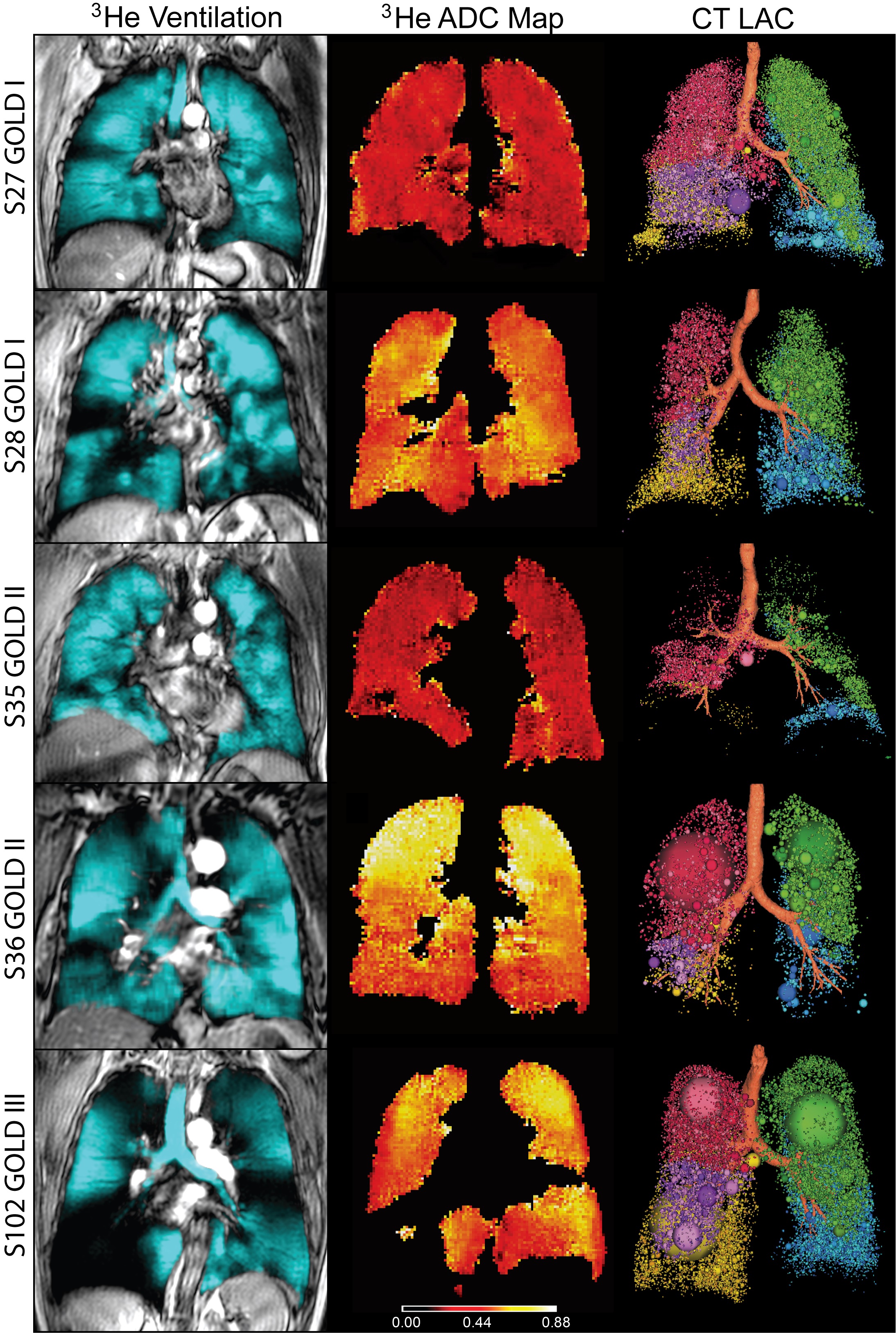Innovative Imaging Techniques to help Improve Treatment of People with COPD
By MedImaging International staff writers
Posted on 02 Dec 2015
The results of a new study published online in the journal Radiology show that MRI and CT imaging could help clinicians find better treatments for some patients with mild-to-moderate Chronic Obstructive Pulmonary Disease (COPD).Posted on 02 Dec 2015
The researchers showed that measurements of emphysema using Magnetic Resonance Imaging (MRI) correlated strongly with the symptoms and exercise capabilities of patients with modestly abnormal lung function test results. COPD affects approximately 65 million people worldwide, and is a progressive lung disease.

Image: Representative patients with mild-to-moderate or severe COPD (Photo courtesy of RSNA).
Current diagnosis of the disease involves a spirometry test that measures the Forced Expiratory Volume in One second (FEV1). MRI and CT can be used to measure disease and emphysema in airways directly, and explain COPD symptoms and exercise capability. Emphysema in COPD patients reduces the amount of oxygen they have access to, especially during exercise. While no cure exists for emphysema, there are steps people can take to mitigate symptoms.
The researchers performed inhaled noble gas MRI to visualizing air spaces in the lungs, and conventional CT on a total of 116 COPD patients including 80 with milder COPD. In addition, the patients were questioned about their quality of life, underwent lung capacity testing, and had to take a six-minute walk to measure their short-term exercise tolerance.
The researchers found that COPD symptoms could be explained with the help of CT and MRI emphysema measurements. In addition, for patients with mild-to-moderate COPD and modestly abnormal FEV1 results, MRI emphysema measurements correlated strongly with exercise limitation. Future studies could help explain symptoms and disease control in people with asthma, and cystic fibrosis.
Coauthor of the study, Grace Parraga, PhD, Robarts Research Institute, London (ON, Canada), said, "COPD is a very heterogeneous disease. Patients are classified based on spirometry, but patients with the same air flow may have different symptoms and significant variation in how much regular activity they can perform, such as walking to their car or up the stairs in their home. FEV1 doesn't tell the whole story. With lung imaging, we can look at patients with mild disease much more carefully and change treatment if necessary. One in four hospital beds in Canada is occupied by a COPD patient, and many of them return to a hospital because they're not being optimally treated. Our study shows that when COPD symptoms and exercise limitations are discordant with FEV1 measurements, we should consider using lung imaging to provide a deeper understanding of the patient's disease and to help improve their quality of life."
Related Links:
Robarts Research Institute














